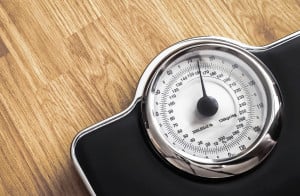What Weight Should I Be?

You might have asked yourself this question because of a piece of clothing that didn’t fit. Some of us got to this point after being notified by the doctor that their weight is a risk to their health. In either case or in addition to many other scenarios, the answer to this question was needed with some additional information on concepts like BMI and what does that have to do with the body weight. But how can we attain a healthy weight and achieve weight loss? So, without any further due let’s answer the question, what weight should I be?
BMI and its relation to body weight
Body mass index or as abbreviated BMI is a statistical measure based on a person’s height and weight. It is taken as a reflection of the health of a person. In June 1998, the national institute of Health (NIH) announced the BMI guidelines and started using this key index to define obesity, normal weight and underweight instead of depending on the traditional height/weight charts.
How is the BMI calculated and interpreted?
BMI represents an individual’s weight in kilograms (kg) divided by his or her height in meters squared:
BMI = Weight (kg) / [Height (m) x Height (m)]
If you use pounds and inches then divide your weight in pounds by your height in inches squared, then multiply the results by a conversion factor of 703:
BMI = [weight (lb) / height (in) / height (in)] x 703
The ideal BMI for most adults would have the values from 18.5 to 24.9 according as adopted from the NIH. The full classification for the various BMIs is illustrated through:
- Classification = BMI (kg/m 2)
- Underweight = <18.5
- Normal = 18.5-24.9
- Overweight = 25.00-29.9
- Obese = 30-39.9
There are numerous online calculators for the BMI, you can use them, or you can do the calculations yourself and categorise yourself accordingly, but keep the following points in mind and seek for professional help then:
- If you are a heavyweight boxer, a high performer athlete or a very muscular person, your BMI may get to fit you in obese class although you have a healthy weight, that is because the muscles are much denser than fat.
- If you have a physical disability, you may have less muscle mass and so the BMI would indicate as if you were underweight while you are actually not.
- If you are very short (less than 150 cm) or very tall (more than 190 cm), then you better not to use the BMI index because it will give an overestimation of obesity for shorter individuals and an underestimation of obesity among the taller ones.
- If you are pregnant and concerned about your health, don’t rely on the BMI measure but rather consult your doctor.
- As children grow, their body fat change in the amount and subsequently their BMI. Thus, it is difficult to establish discrete and standard BMI ranges for children and their BMI interpretation is different and considers their age and sex.
What if I was underweight (low BMI)?
It is worth mentioning that being underweight is linked to poor health and greater mortality in certain situations, as is being far below the healthy BMI range. If you have a BMI of less than 18.5, then you are classified as underweight and you may develop a number of health issues because of being in an immunocompromised state. Examples include:
- Respiratory disease
- Digestive diseases
- Osteoporosis.
What if I was overweight (high BMI)?
Again, being on the other end of the scale -having a BMI greater than 25, i.e overweight- can be associated with various health problems like:
- Hypertension (high blood pressure).
- Type 2 diabetes.
- Cardiovascular diseases.
- Osteoarthritis.
- Depression and other mental health disorders.
How can I get to my healthy weight?
Whether you are overweight or underweight, getting to your healthy weight measurement can seem like a struggle, fortunately, there are plenty of things and various strategies to help you get to that goal healthily and for the long-term.
The main and the most effective plans to get healthy and in shape comes in two steps; diet and exercise.
1. Diet:
The key to a healthy diet is to follow a balanced diet containing all nutrients you need and to adjust the calories you take (energy you consume) according to the activities you do (energy you use).
The NHS has recommended some ‘’practical steps for healthy eating’’, they are summarized next:
- Basing meals on starchy carbohydrates
- Some people think starch can make them put on weight, however, a gram of starch contains less than half of the calories that a gram of fat does. Thus, it is important to ensure having starchy carbohydrates (e.g. potatoes, bread, rice, pasta and cereals) up to one-third of the meal. Moreover, you should watch the fats you use or add upon cooking or serving these foods.
- Eating plenty of fruit and vegetables
- Eating at least five portions of different fruits and vegetables daily is recommended to keep you healthy. They contain fibre that keeps you full and regulates your digestion. In addition, they contain minerals and vitamins that the body cannot produce on its own in addition to other health benefits that maintain your vibes and energy.
- Having more fish
- Getting at least two portions of fish (like coley, cod, tuna and skate)- a week is recommended to make use of the vitamins and minerals they have. Go for the fresh, frozen or canned, but don’t forget that the last can have a high amount of salt. It is advised that one of the recommended two portions to be an oily fish such as salmon, mackerel, trout or sardines as they are a rich source of omega-3 fats that help in preventing heart diseases.
- Consuming less salt
- Too much salt is associated with elevating the blood pressure. Even you are not directly taking too much salt with the food you eat, you may be having too much salt from the one you buy e.g. breakfast cereals, soups and sauces. About a teaspoonful, a day is the recommended share to have.
- Cutting down on saturated fat and sugar
- Fat is needed in the diet, but how much is required is what matters. Out of the two types of fat, too much of the saturated one (> 30 g for men and > 20 g per woman/ day)- is related to increasing the blood cholesterol and risk of cardiovascular diseases. This type is the one found in foods like butter, cream and processed meats like salami, sausages and the skin on chicken. As the first type is saturated, so obviously the second is unsaturated and actually that represents the healthier choice to consider for your fat intake. Vegetable oils, oily fish and avocados are good sources of it.
- Sugar can be a silent threat to your health. So, it is better to manage the amount you take from it. Regular consumption of soft drinks, alcohol and packaged foods that coati high amount of sugar can have its implication in many ways. It can cause tooth decay and it increases the risk of weight gain and obesity which would ring the alarm bell for the health conditions associated with that.
- Don’t get thirsty
- Getting and keeping the hydration state is crucial for your body. The recommendation made by the specialist is to take 6-8 glasses a day. It is important for the normal function of every system in your body including the vital ones like the heart, brain and muscles. Remember also that it is the fluids which transport nutrients to your cells throughout the body, flush bacteria from your bladder and prevent constipation. So, having water-containing food, non-alcoholic drink or healthier options such as lower-fat milk and water- is crucial to your general wellbeing.
- Don’t skip breakfast
- If you are one of those who thinks that skipping breakfast can help you reduce your weight, then this part is for you. In fact, it has been reported in several studies that people who have their breakfast regularly are less prone to be overweight. That in addition to the numerous advantages that breakfast offer in providing some of the nutrients needed to maintain concentration and good mental performance throughout the morning and ultimately life.
2. Exercise:
Inactivity is something that today’s generation is suffering from with all the facilities being available without the need to move outside the home but rather being delivered to your doorstep. Watching TV, using a computer, sitting down to listen to music and taking the car for short journeys are normal things we do but they are really impacting our health in a negative way.
So, we need to think about the type of activity we make; as physical activity is the other portion of the spell of good health. It is important to get to the right weight and to maintain it. Actually, research has shown that physical activity can decrease the risk of major ailments, such as heart disease, stroke, type 2 diabetes and cancer by up to 50% and impart a lower risk of early death by up to 30%. Moreover, it boosts self-confidence, sleep quality and have a positive impact on many mental health problems such as stress, depression, dementia and others.
It is not about going to the gym for hours starting from today, but somewhat you should start with a regular physical activity that is fun and convenient. Take it easy and progressively and try to add activity to your everyday routine. Try getting off the bus one stop early and walk the rest and if you have a car consider parking it a bit far than usual or even switch to cycling. You can also walk around your neighbourhood and don’t forget to get up from your desk every once and a while and make the blood circulate in your body.
After a while, go to a little higher level but remember to do it with fun. Get your friends and go and to register in your local centre. You wouldn’t believe that how easily you can spend a whole hour there dancing the extra weight out at any class you prefer, and Zuma is a popular one. Other suggestions are 2.5 hours a week of aerobic exercise and doing some muscle strengthening at least twice a week.
There are no fixed rules here. Think of any activity you want to pursue but keep in mind that you should aim for at least 150 minutes of physical activity over a week. That what experts recommend, and they also stress on the point that you should not reward yourself with a high-energy treat after activity. If you feel hungry after doing any exercise, have some food and drinks that are filling but low in calories or else you would be filling a broken glass.
Last word
The perfect weight is not the ultimate goal for either health nor appearance. You can be happy with your appearance in a range of weights. Being healthy is the important thing. BMI can give an indication of that; it sets some standards for the good health, beyond which poor health outcomes and higher mortalities for some conditions would be encountered. Calculate your BMI, if it is above or below the normal, it’s critical you correct things in a healthy and responsible way. Have and a balanced diet and add some physical activity to your routine, it is simpler than it sounds and extremely rewarding.
References:
- Cole TJ, Bellizzi MC, Flegal KM, Dietz WH. Establishing a standard definition for child overweight and obesity worldwide: international survey. Bmj 2000;320:1240.
- Mooney SJ, Baecker A, Rundle AG. Comparison of anthropometric and body composition measures as predictors of components of the metabolic syndrome in a clinical setting. Obesity research & clinical practice 2013;7:e55-e66.
- Finucane MM, Stevens GA, Cowan MJ, Danaei G, Lin JK, Paciorek CJ, Singh GM, Gutierrez HR, Lu Y, Bahalim AN. National, regional, and global trends in body-mass index since 1980: systematic analysis of health examination surveys and epidemiological studies with 960 country-years and 9· 1 million participants. The Lancet 2011;377:557-67.
- Prospective Studies C. Body-mass index and cause-specific mortality in 900 000 adults: collaborative analyses of 57 prospective studies. The Lancet 2009;373:1083-96.
- He XZ, Baker DW. Body mass index, physical activity, and the risk of decline in overall health and physical functioning in late middle age. American Journal of Public Health 2004;94:1567-73.
- Willett WC, Dietz WH, Colditz GA. Guidelines for healthy weight. New England journal of medicine 1999;341:427-34.
- Centers for Disease Control and P. Healthy weight—it’s not a diet, its a lifestyle. About BMI for Adults. September 2011;13.
- https://www.nih.gov
- https://www.nhs.uk
- https://www.webmd.com




